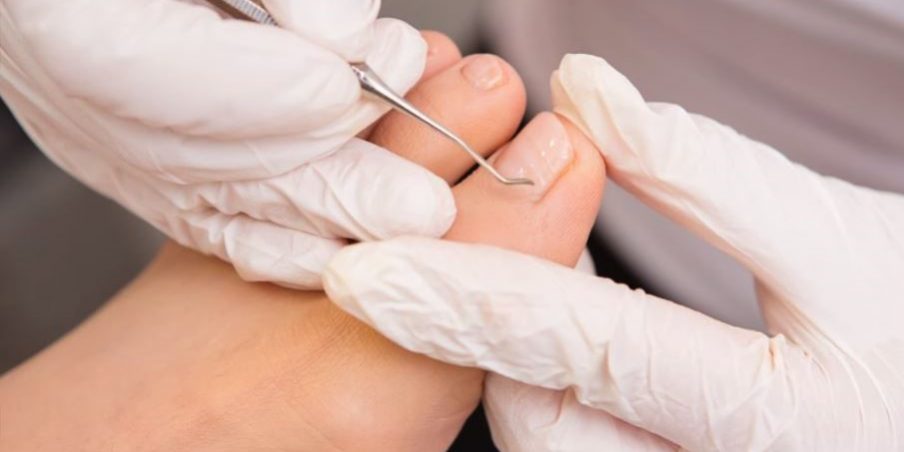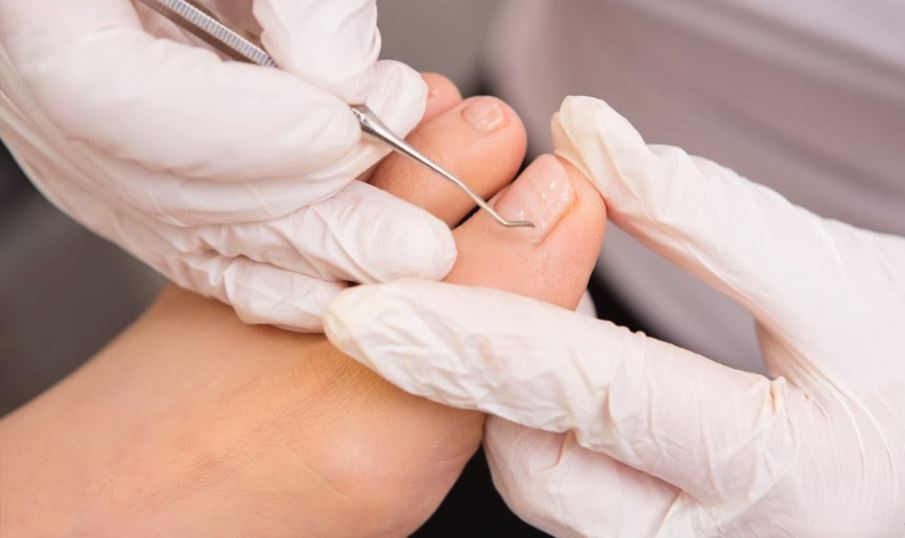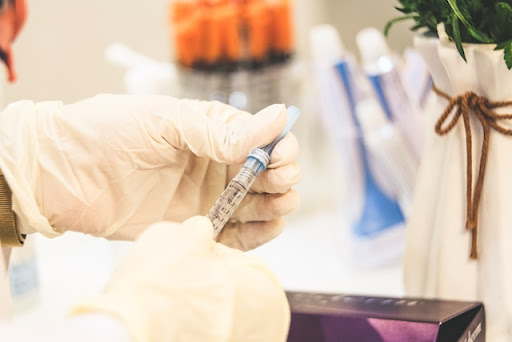At Adelaide Foot and Ankle, we often treat patients of all ages with ingrown toenails. Ingrown toenails occur when a corner or side of the nail (nail edge) curves downwards and penetrates the surrounding skin.
Ingrown nails often cause pain and discomfort. They can lead to inflammation and sometimes, infection. Albeit having an ingrown nail is a minor discomfort at first, an infected ingrown toenail can be a serious recurring problem.
Luckily, our friendly podiatrists are experts at managing and treating ingrown toenails. We offer a range of ingrown toenail treatment options to patients with this type of foot problem.
How is an Ingrown Toenail Treated?
 Image Source: Pexels
Image Source: Pexels
At our podiatric clinic, identifying an ingrown toenail is typically a simple process. We can easily tell by looking at it whilst having a conversation with you.
We rarely conduct diagnostic tests, such as laboratory work or imaging, unless there are specific concerns about the underlying cause of the issue.
There are several ingrown toenail remedies you can do at home. Some home remedies to prevent ingrown toenails include:
- Avoiding wearing tight-fitting shoes
- Trimming the toenail
- Packing with cotton
- Soaking with Epsom salt
- Lifting with dental floss
But if these conservative treatment methods fail to resolve your ingrown toenail, you should visit your podiatrist. Because an infected ingrown toenail will not heal on its own, consulting a foot care specialist is crucial. They will evaluate your condition, provide podiatric treatment and recommend if a surgical treatment for an ingrowing toenail is necessary.
Podiatric Treatment for In-Grown Toenails
Fixing an ingrown toenail at our clinic is usually quick and easy. Our experienced podiatrists might just snip a tiny piece of the nail to improve the problem.
We might file your nail to prevent an ingrowing nail edge from recurring. If there is an infection, our podiatrists may prescribe oral antibiotics.
Ingrown Toenail Surgery
Image Source: Unsplash
When less invasive treatments fail to improve an ingrown toenail, the most common procedure for resolving the issue is a Partial Nail Avulsion with phenolization (PNA). It is a highly effective procedure to treat an ingrown toenail and can be performed at any podiatry clinic.
PNA is a minor surgical procedure that typically lasts about 20 to 30 minutes. Depending on your specific condition, either a portion or the entire toenail may need to be removed.
Before your surgery, your podiatrist will discuss various surgical options available for ingrown toenail removal and help determine the best plan for your specific needs.
Again, the most common procedure for ingrown toenail removal is PNA. This surgery permanently removes the problematic edge of the toenail while preserving its natural appearance. In some instances, Total Nail Avulsion (TNA) surgery may be necessary. This procedure will completely remove the toenail to prevent any potential future complications.
Here’s how we usually treat an ingrown toenail:
1. Cleaning the affected area
Before we get started with the procedure, we make sure the affected area is clean and sterile. We will also use sterilised surgical instruments.
2. Numbing the affected toe
We then apply a local anaesthetic by injecting it into the side of your toe where the nerves are located. Numbing the toes usually takes about 15-20 seconds to complete.
After the injection takes effect, you’ll feel numbness in the toe. You’ll be awake and comfortable throughout the entire procedure.
The anaesthesia can slightly affect your ability to drive or walk after the surgery. But most importantly, you will not feel any pain during the procedure.
3. Applying a tourniquet
Once the toe is numb, we apply a tourniquet (a snug elastic band) at the base of your toe. The tourniquet helps restrict blood flow, providing better visibility during the surgery. We then clean the toe and the surrounding areas with betadine to prevent potential infections.
4. Taking out the part of the nail that is digging into your skin
Using specialised instruments, we carefully separate your toenail from the nail bed. We then make a vertical cut on the ingrown side of the nail, extending it down to the cuticle and gently detaching it from the nail plate.
Next, we take out the cut section of the nail. We make sure that we take away an adequate portion of the toenail to prevent the condition from coming back. We’ll try to leave enough portions for the toenail to look normal once it’s fully healed.
5. Applying phenol
Afterward, we apply a liquid phenol liquid for 2 minutes. This process destroys the nail matrix, the area beneath the cuticle responsible for producing nail-forming cells, which will prevent the nail from regrowing. To prevent infection, we then flush the toe with a betadine solution.
6. Detaching the tourniquet
We will then remove the tourniquet once the procedure is complete.
7. Applying bandage
After applying some betadine ointment and dressing your toe, you’re good to head home and relax.
Does it Hurt When a Podiatrist Removes an Ingrown Toenail?
Image Source: Unsplash
Occasionally, some patients may feel hesitant about having a portion of their nails removed. At Adelaide Foot and Ankle, we truly care about our patient’s well-being, so we make sure our ingrown toenail surgery is as painless as possible.
If your toenail is extremely sensitive to pressure and touching it causes severe pain, we typically recommend using a local anaesthetic. This allows us to treat ingrown toenails by conducting a thorough and pain-free cleaning and clearing of the nail and nail bed.
Once the anaesthetic wears off, you might feel a bit uncomfortable. However, our podiatrists will advise which medications to use to keep you comfortable.. The nail will be healed in 7 to 14 days and look a little less wide. but still normal.
Can You Walk After Ingrown Toenail Surgery?
You will be able to walk after the surgery but it is essential to wear open-toed shoes as you head home. We recommend you bring a pair of thongs to wear of the procedure and for the next 24 hours.
After the surgery, you will only need to keep your foot dry until the next morning. We will supply a dressing pack with written instructions and all the items you need to dress your toe every day until you are seen back in the office about a week later.
How Long Does it Take to Recover from an Ingrown Toenail Surgery?
You will be good to head home right after the surgery.
The toe will be numb for 2-3 hours after surgery and you should limit how much you walk until the numbness wears off.. Once that initial period is over, you can start to become more active.
Avoid playing sports or engaging in strenuous activities for the first 1- 7 days.
Your podiatrists will inform you when it is safe to resume your regular activities.
How to Prevent Ingrown Toenails
Image Source: Pexels
Preventing an ingrown toenail is important and you can do so by following these key steps:
- Maintain proper foot hygiene to keep your feet clean and dry.
- Make sure to cut your toenails straight across, avoiding rounded or curved edges.
- Choose appropriate footwear that suits your activities, ensuring they provide a comfortable and secure fit.
Suffering From an Ingrown Toenail? We Can Help!
If you are dealing with an ingrown toenail or any other foot or ankle issues, the experienced podiatrists at Adelaide Foot and Ankle are here to help. We will thoroughly examine all potential surgical treatment options to address your problem.
However, if surgery is required, you can trust that we will provide the highest standard of care. Schedule a consultation today.
Sources:
- https://www.healthdirect.gov.au/surgery/surgery-for-ingrowing-toenail-adult
- https://www.aafp.org/pubs/afp/issues/2002/0615/p2557.html#:~:text=If%20the%20ingrown%20toenail%20gets,if%20the%20problem%20becomes%20worse.
- https://www.healthline.com/health/ingrown-toenail-surgery
- https://www.tga.gov.au/resources/artg/32490








